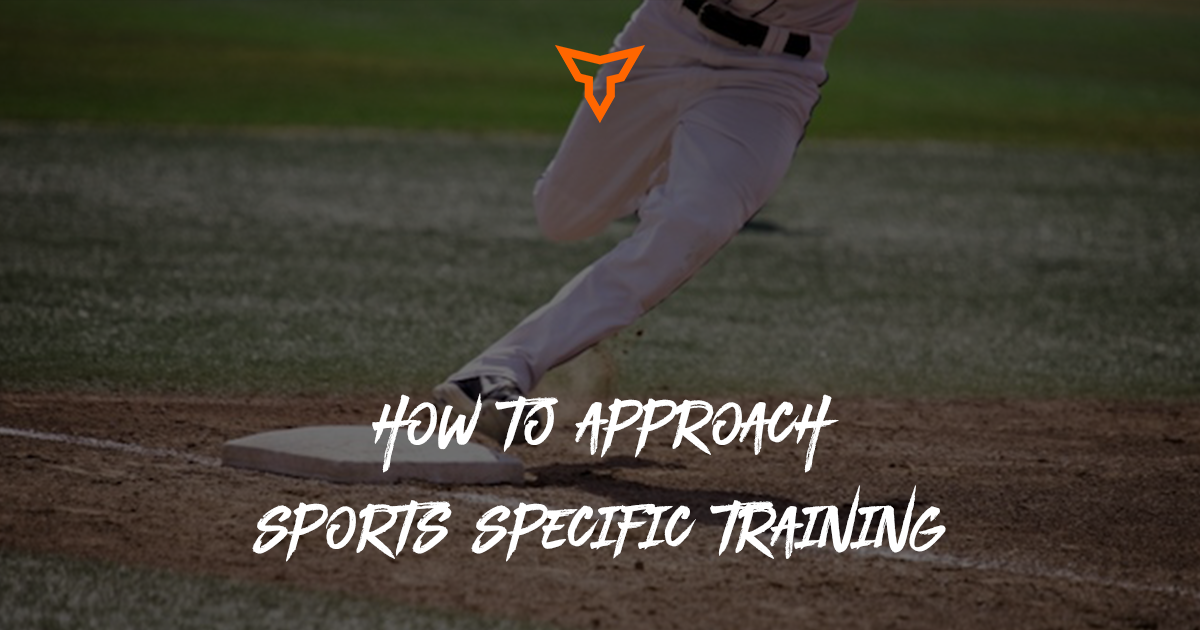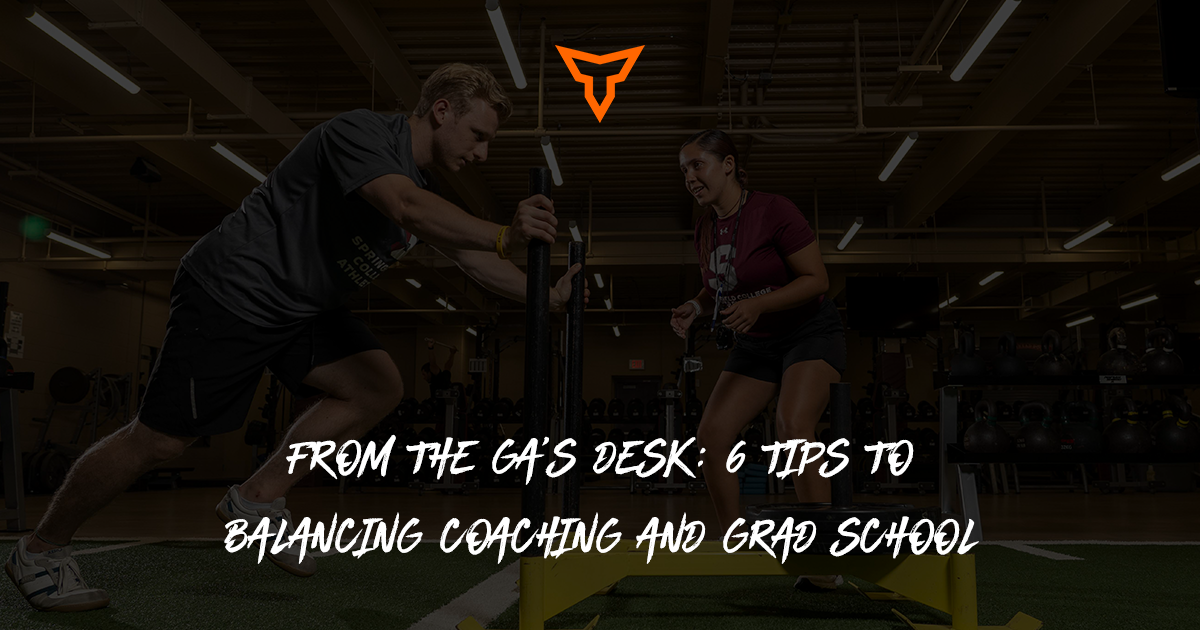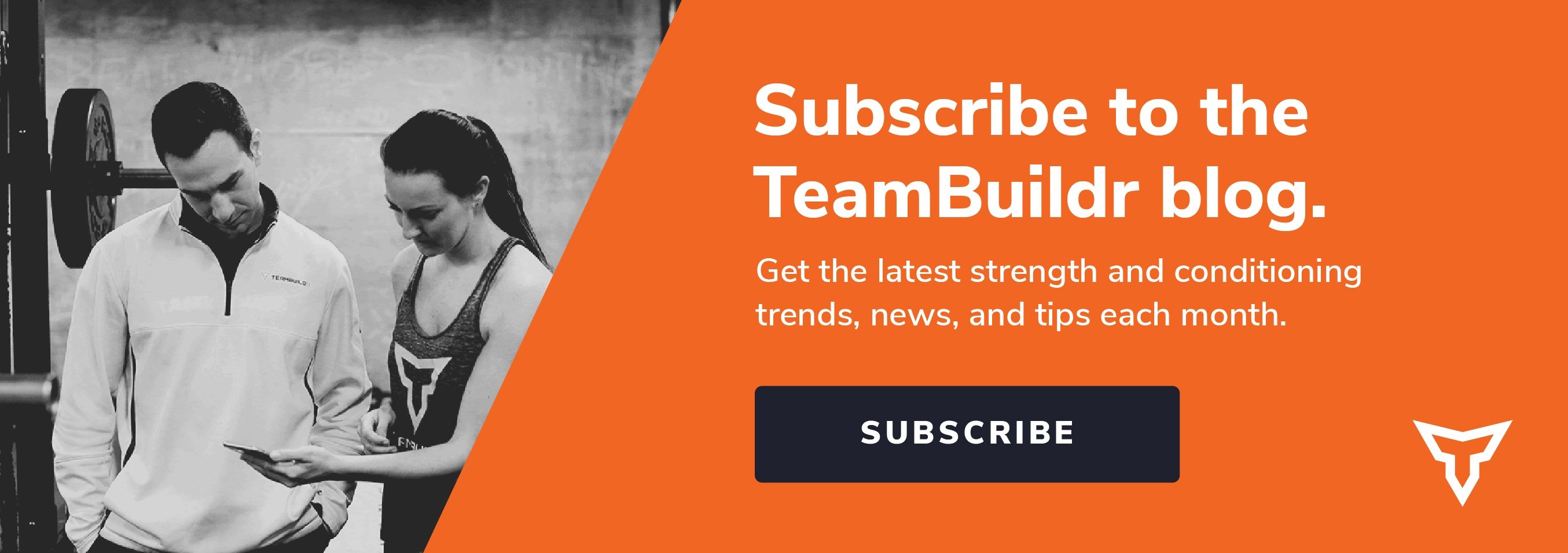Handling Athletes Who Are “Spread Thin” as a Private Strength Coach
Are you a strength coach in the private sector?
You may know the “struggle” all too well then… athletes that come to train with you who are trying to (or forced to) do WAY too much to get to that next level.
So, what do you do?
Well, I’m going to share with you some of what I do and how I manage these struggling athletes that are “spread thin” and help them to manage their athletic development as well.
Foundational Principles
First off, do you have a set of principles that you coach by and that you set programs by?
This is crucial!
If you were asked today, “What are the principles of your coaching/program/system?” by a potential athlete/client, how would you answer?
Think of the good ole’ elevator business pitch. Your principles should be like a lighthouse in the dark to guide you whenever you are faced with a new situation.
What would your principles be? What bullet points come to your mind?
Here's mine:
- Build, don’t break – DO NO HARM – “Don’t kill them!” -Jim Wendler
- Focus on the person - My programming and coaching are athlete specific, NOT sport specific.
- Develop the whole athlete with long term goals in mind.
- Learn from those who have come before me.
Obviously, there’s more depth to this, but for the sake of a blog post, I will keep it short and elaborate on this.
Principle #1
Let’s talk about being a builder, not a breaker.
This was a phrase that I heard from Joe Kenn at the 2018 Elite FTS Sports Performance Summit earlier this past spring. It really resonated with me and fit my number one principle very well. There must always be balance with programming AND coaching.
I put programming first because programming is easy when you know all the data. When a sport begins to pick up (let’s use baseball as an example) then something has to give.
With baseball players, as soon as throwing programs, hitting sessions, and bullpens start coming around, I back off medicine ball throws.
Why?
The athlete is getting plenty of throwing through their sports practice. I don't need to make the throw more.
What about an athlete whose sport is primarily aerobic, such as cross country? When conditioning increases, lifting volume decreases.
See? Balance. Our jobs as coaches is to connect with the athletes we serve.
Therefore, I mentioned that there must be balance with coaching because we need to be sure that we are not too harsh nor too soft on athletes.
Connect with the personality of the athlete, push them to new levels, but don’t berate them, over work them, or constantly yell at them. There is a time a place where we as coaches must “bring the juice”, but not all athletes respond well to this type of coaching.
This is where Brett Bartholomew, Dr. Rob Bell, and Dr. Rob Gilbert have had a substantial influence on my coaching career.
We MUST connect with our athletes and NOT make them feel like they are machines, or that they can get by with mediocre effort. If one person needs you to be their hype man to get a big lift, be the hype man. If another person needs logic and reasoning to give it their all, provide the knowledge they need to keep pushing.
Clearly, this is a topic that can go far further than this, but for the sake of this blog post, I’ll leave it here.
Create the balance for your athletes in both the program and your coaching so that you can build them up and not break them.
Principle #2
Focus on the person. Let your coaching and program be athlete specific, NOT sport specific.
This builds on my first principle.
Think about the personality types of the athletes you serve, and their program, but keep the goal the goal. We need to own the fact that most athletes are not power lifters, weightlifters, strong man competitors, or highland games athletes.
The barbell/dumbbell/kettlebell is not their sport… they are merely tools to develop athleticism (duh!). Also, “Little Timmy” is a human being before he is a *insert name of sport here (oh yeah, and make sure that it’s only one sport because we all know sport specialization is cool…)* athlete.
These considerations lead me to a different focus. One that is not centered merely on how big of a total any of my athletes have. Also, one that is not centered on what position in whatever sport it is that they play.
Sport specific training IS playing that sport.
In my eyes, there’s nothing that will help you throw a baseball better than throwing a baseball. With that said, it is always helpful to increase performance of throwing that baseball and prolong how far in the sport an athlete can go if they are stronger, more injury resilient, more powerful, etc.
But, it all starts with “Little Timmy”. He is a human being… with a unique personality, and a unique body that may not need just a cookie cutter approach to get better for whatever sports and activities that he wants to participate in. Therefore, evaluating is important!
Not just evaluating, but then taking that data and applying it to the program and coaching. There are several systems out there that you could use to evaluate athletes these days. Honestly, I don’t care what camp you fall in to, so long as you take the data and do something with it!
Focus on Timmy!
Principle #3
Develop the whole athlete with long term goals in mind.
I’m going to throw in two quotes from Dan John that have stuck with me pretty well in this principle: “Little and often over the long haul” and “Keep the goal the goal”.
Remember, evaluations and assessments are important. I evaluate movement and performance and assess what needs to be done. With that said, there’s a question that we all ask our athletes (and ourselves) that needs to be looked at closely.
That question is, “What do you want?”
When this is asked, especially to younger individuals, expect the flood gates to open. Many times, the people that we serve have not given this question due diligence in thought nor explanation. You will have the diamonds in the rough who have laser focus on a long-term goal, but not many can answer this question the same way month-to-month, let alone week-to-week.
So, what do you do to help them?
Create clarity, guidance, and COACH them through it. This is one of the areas that I have a lot of fun with because I am a strategy guy deep down.
I love the science of periodization, goal setting, and executing a plan. However, this rarely goes as planned. We must have systems in place that are adaptable to this element of human nature.
How do you connect with someone to keep them on track to their goal? If their goal changes/they get injured, what do you do to react and allow their training to adapt based on these changes?
If we are merely speaking to how to get someone more athletic, there are a number of different training systems out there to use (conjugate, linear, undulating, starting strength, 531, triphasic, VBT, Block, Tier, etc.)
Many coaches/social media trainers like to get on and bash each other over which methods are used, but honestly, use the system that you are most comfortable coaching. If it gets results for the athlete, I don’t know that they are really going to care what system you used to get them there. Whatever system it is, just be prepared to adjust on the fly to the needs of the athlete. Have 3-week, 4-week, 6-week cycles of training where you perform evaluations and assessments between cycles. This way you can see the progress that has been made and adjust accordingly. But, remember, “Keep the goal the goal.”
Principle #4
Learn from those who have come before me.
In the field of strength & conditioning/fitness, a lot has been discovered at this point. I’m not going to say that there are “no new inventions in fitness” because the application of tools and systems in different contexts is always new. But, it is important for us to give credit where credit is due!
Need to learn about speed training? Seek out some of the brilliant minds that have cutting edge methods and research that they can teach you with.
Need to learn about a specific style of lifting? Again, seek out a coach that has been doing it longer than you and can impart wisdom to you so that you don’t have to relive their past mistakes.
“Nobody gets there alone” is a very enjoyable book written by Dr. Rob Bell and truly highlights this idea that none of us can do what we do without having had those that came before us, and it is important for us all to recognize that. Now, don’t give all the credit away! After all, you will take the knowledge and wisdom that you gain through mentors and books and apply them in your own manner and based on the different situations that you are faced with.
But give credit where credit is due.
In conclusion…
There are many factors that play into how we coach and program for different athletes.
Are they in-season, off-season, pre-season? Have they ever trained before? Does their team do any training at the school/together as a team? How will you fill in the gaps?
Regardless of what sort of situation you are faced with in struggling athletes that are “spread thin” when they come to your program for training, a solid set of principles will help to guide you through it.
So, with that said, let me know some of your principles. I’d love to connect with fellow coaches in our field, and hopefully this can be an ongoing discussion to help progress our field further.
You can connect with me via email or phone call to Pinnacle Sports. My email address is: ryanhart@pinnaclesports.org My work phone is: (330)239-0616 Ext. 107
Subscribe to our blog
Subscribe to receive the latest blog posts to your inbox every week.
Related posts

Are Strength Coaches Scared of Sports Specific Skill Training?

From the GA's Desk: 6 Tips to Balancing Coaching and Grad School

